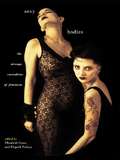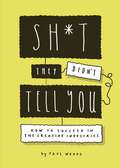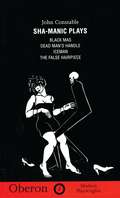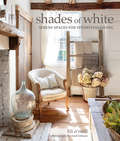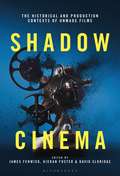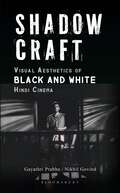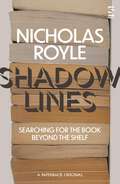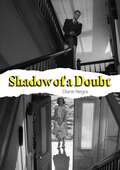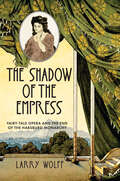- Table View
- List View
Sexually Explicit Art, Feminist Theory, and Gender in the 1970s (Routledge Research in Gender and Art)
by Christian LiclairStructured around sexual desire as the central analytical category, this monograph systematically approaches a heterogeneous array of artworks to purposefully examine the entanglements of art, feminist theory, gender, and sexuality. This book considers the potential of sexually explicit art to challenge a socially constructed conception of sexuality as well as gender, and explores the sexually explicit as a means to (re-)claim agency for marginalized subjectivities and to emancipate desire from within the patriarchal and heteronormative system. In distinct case studies, the author focuses on works by four US-American artists – Robert Mapplethorpe, Joan Semmel, Betty Tompkins, and Tee A. Corinne – and situates them in relation to contemporaneous debates associated with the insurgent Sexual Liberation Movements of the 1970s. The book will be of interest to scholars working in art history, visual culture, and gender and sexuality studies.
Sexy Bodies: The Strange Carnalities of Feminism
by Elizabeth Grosz Elspeth ProbynAre bodies sexy? How? In what sorts of ways? Sexy Bodies investigates the production of sexual bodies and sexual practices, of sexualities which are dyke, bi, transracial, and even hetero. It celebrates lesbian and queer sexualities but also explores what runs underneath and within all sexualities, discovering what is fundamentally weird and strange about all bodies, all carnalities. Looking at a pleasurable variety of cultural forms and texts, the contributors consider the particular charms of girls and horses, from National Velvet to Marnie; discuss figures of the lesbian body from vampires to tribades to tomboys; uncover 'virtual' lesbians in the fiction of Jeanette Winterson; track desire in the music of legendary Blues singers; and investigate the ever-scrutinised and celebrated body of Elizabeth Taylor. The collection includes two important pieces of fiction by Mary Fallon and Nicole Brossard. Sexy Bodies makes new connections between and amongst bodies, cruising the borders of the obscene, the pleasurable, the desirable and the hitherto unspoken rethinking sexuality anew as deeply and strangely sexy.
Sexy Bodies: The Strange Carnalities of Feminism
by Elizabeth Grosz Elspeth ProbynAre bodies sexy? How? In what sorts of ways? Sexy Bodies investigates the production of sexual bodies and sexual practices, of sexualities which are dyke, bi, transracial, and even hetero. It celebrates lesbian and queer sexualities but also explores what runs underneath and within all sexualities, discovering what is fundamentally weird and strange about all bodies, all carnalities. Looking at a pleasurable variety of cultural forms and texts, the contributors consider the particular charms of girls and horses, from National Velvet to Marnie; discuss figures of the lesbian body from vampires to tribades to tomboys; uncover 'virtual' lesbians in the fiction of Jeanette Winterson; track desire in the music of legendary Blues singers; and investigate the ever-scrutinised and celebrated body of Elizabeth Taylor. The collection includes two important pieces of fiction by Mary Fallon and Nicole Brossard. Sexy Bodies makes new connections between and amongst bodies, cruising the borders of the obscene, the pleasurable, the desirable and the hitherto unspoken rethinking sexuality anew as deeply and strangely sexy.
Sh*t They Didn't Tell You: How to Succeed in the Creative Industries
by Paul WoodsThis straight-talking, fun book is aimed at fresh graduates planning a career in the creative industries. It gives them the tools to identify and navigate the right path. Filled with practical tips and exercises, and illustrated with 'how to' flow charts and diagrams, it focuses not just on the creative skills needed for a successful and lucrative career but a great lifestyle too.
Sha-Manic Plays: Black Mas; Iceman; False Hairpiece; Dead Man's Handle (Oberon Modern Plays)
by John ConstableIncludes the plays; Black Mas, Iceman, The False Hairpiece, and Dead Man's Handle.Four darkly mysterious plays with a shamanic theme by one of Britain’s most offbeat playwrights.
Shade: A Tale of Two Presidents
by Pete SouzaAs Chief Official White House Photographer, Pete Souza spent more time alongside President Barack Obama than almost anyone else. His years photographing the President gave him an intimate behind-the-scenes view of the unique gravity of the Office of the Presidency, and the tremendous responsibility that comes with it.Now, as a concerned citizen observing the Trump administration, he is standing up and speaking out.Shade is a portrait in Presidential contrasts, telling the tale of the Obama and Trump administrations through a series of visual juxtapositions. Here, more than one hundred of Souza's unforgettable images of President Obama deliver new power and meaning when framed by the tweets, news headlines, and quotes that defined the first 500 days of the Trump White House.What began with Souza's Instagram posts soon after President Trump's inauguration in January 2017 has become a potent commentary on the state of the Presidency, and the USA. Some call this 'throwing shade'. Souza calls it telling the truth.In Shade, Souza's photographs are more than a rejoinder to the chaos, abuses of power, and destructive policies that now define America's highest office. They are a reminder of a President we could believe in, and a courageous defense of American values.
Shades of White
by Fifi O'NeillShades of White is a pure celebration of all the brilliant white hues, and how they work in harmony with different textures inside the home. White is magical. It can illuminate a space, or it can be a blank slate, allowing other décor in the room to shine. Whether your style is rustic, modern, romantic, vintage or classic, Fifi O'Neill will show you that there is a perfect shade of white for you. With beautiful commissioned photography, Fifi showcases twelve dazzling homes that have mastered using shades of white throughout. From fresh to cosy, sophisticated to shabby chic, white is classy, adaptable and timeless. Shades of White showcases interior inspiration for using white in any setting, pairing the infinite shades with different textures such as wood and metal, or even with other colours, to create stylish and stunning interiors.
Shading, Lighting, and Rendering with Blender's EEVEE: Learn how to create and iterate amazing concept art using a real-time rendering engine
by Sammie CrowderGet to grips with new real-time animation techniques and tricks to improve both your artistic and technical skills in shading, 3D rendering, lighting, and scene creation using Blender 3.0Key FeaturesLearn real-time rendering engine concepts by creating three projectsUnderstand how to update workflows to Blender 3.0Explore intermediate to advanced-level tutorials on creating art inside BlenderBook DescriptionBlender is one of the most important emerging 3D software packages in the world. Anyone can download the software, and with millions of tutorials on YouTube and elsewhere, learn how to use it. EEVEE, a state-of-the-art, real-time rendering engine, is a fairly new addition to Blender and provides you with the capacity to quickly iterate on the artwork, allowing you to rapidly create, modify, and produce quality renders.This book provides a high-level overview of what EEVEE is capable of and then takes you through the steps of creating three professional-quality artworks in three unique styles. As you progress, you'll discover new techniques added in Blender 3.0, ways to add life to your renders, and mind-blowing shortcuts that will allow you to take your artwork to the next level.By the end of this Blender book, you'll have created three separate works that will have challenged you to design and iterate with the full power of Blender EEVEE.What you will learnExplore EEVEE Render Properties for optimal outcomesFocus on shading processes, including those that are both traditional and more cutting-edgeUnderstand composition and create effective concept art inside BlenderDiscover procedural workflows to shorten the artistic process instead of getting mired in detailsUnderstand intermediate Blender workflows for working in a professional environmentDevelop art in different styles and learn why each style has different workflows and conventionsCreate interactive, rapid changes in Blender's EEVEE engineWho this book is forThis book is for 3D animators, sculptors, modelers, and concept artists who want to use EEVEE to speed up their work in movies, TV, and game design. Readers are expected to have a basic to intermediate-level understanding of 3D programs and ray-tracing engines.
Shadow: the architectural power of withholding light (Analysing Architecture Notebooks)
by Simon UnwinEach of these Analysing Architecture Notebooks is devoted to a particular theme in understanding the rich and varied workings of architecture. They can be thought of as addenda to the foundation volume Analysing Architecture, which first appeared in 1997 and has subsequently been enlarged in three further editions. Examining these extra themes as a series of Notebooks, rather than as additional chapters in future editions, allows greater space for more detailed exploration of a wider variety of examples, whilst avoiding the risk of the original book becoming unwieldy. Shadows may be insubstantial but they are, nevertheless, an important element in architecture. In prehistoric times we sought shade as a refuge from the hot sun and chilling rain. Through history architects have used shadows to draw, to mould form, to paint pictures, to orchestrate atmosphere, to indicate the passing of time … as well as to identify place. Sometimes shadow can be the substance of architecture.
Shadow: the architectural power of withholding light (Analysing Architecture Notebooks)
by Simon UnwinEach of these Analysing Architecture Notebooks is devoted to a particular theme in understanding the rich and varied workings of architecture. They can be thought of as addenda to the foundation volume Analysing Architecture, which first appeared in 1997 and has subsequently been enlarged in three further editions. Examining these extra themes as a series of Notebooks, rather than as additional chapters in future editions, allows greater space for more detailed exploration of a wider variety of examples, whilst avoiding the risk of the original book becoming unwieldy. Shadows may be insubstantial but they are, nevertheless, an important element in architecture. In prehistoric times we sought shade as a refuge from the hot sun and chilling rain. Through history architects have used shadows to draw, to mould form, to paint pictures, to orchestrate atmosphere, to indicate the passing of time … as well as to identify place. Sometimes shadow can be the substance of architecture.
Shadow Algorithms Data Miner
by Andrew Woo Pierre PoulinShadow Algorithms Data Miner provides a high-level understanding of the complete set of shadow concepts and algorithms, addressing their usefulness from a larger graphics system perspective. It discusses the applicability and limitations of all the direct illumination approaches for shadow generation.With an emphasis on shadow fundamentals, the boo
Shadow Cinema: The Historical and Production Contexts of Unmade Films
by James FenwickFilmmakers and cinema industries across the globe invest more time, money and creative energy in projects and ideas that never get produced than in the movies that actually make it to the screens. Thousands of projects are abandoned in pre-production, halted, cut short, or even made and never distributed – a “shadow cinema” that exists only in the archives. This collection of essays by leading scholars and researchers opens those archives to draw on a wealth of previously unexamined scripts, correspondence and production material, reconstructing many of the hidden histories of the last hundred years of world cinema. Highlighting the fact that the movies we see are actually the exception to the rule, this study uncovers the myriad reasons why 'failures' occur and considers how understanding those failures can transform the disciplines of film and media history. The first survey of this new area of empirical study across transnational borders, Shadow Cinema is a vital and fascinating demonstration of the importance of the unmade, unseen, and unknown history of cinema.
Shadow Cinema: The Historical and Production Contexts of Unmade Films
Filmmakers and cinema industries across the globe invest more time, money and creative energy in projects and ideas that never get produced than in the movies that actually make it to the screens. Thousands of projects are abandoned in pre-production, halted, cut short, or even made and never distributed – a “shadow cinema” that exists only in the archives. This collection of essays by leading scholars and researchers opens those archives to draw on a wealth of previously unexamined scripts, correspondence and production material, reconstructing many of the hidden histories of the last hundred years of world cinema. Highlighting the fact that the movies we see are actually the exception to the rule, this study uncovers the myriad reasons why 'failures' occur and considers how understanding those failures can transform the disciplines of film and media history. The first survey of this new area of empirical study across transnational borders, Shadow Cinema is a vital and fascinating demonstration of the importance of the unmade, unseen, and unknown history of cinema.
Shadow Craft: Visual Aesthetics of Black and White Hindi Cinema
by Gayathri Prabhu Nikhil GovindThe years between Indian independence (1947) and the dominance of colour cinema (early 1960s) saw the emergence and fruition of a distinct, confident, and nuanced black and white aesthetic in Hindi mainstream cinema. Shadow Craft is an ardent and immersive study of cinematic craftings that emblematise the oeuvres of Kamal Amrohi, Raj Kapoor, Nutan, Bimal Roy, Guru Dutt, and Abrar Alvi. Films such as Aag (1948), Mahal (1949), Seema (1955), Pyaasa (1957), Sujata (1959), Kagaz Ke Phool (1959), Sahib Bibi Aur Ghulam (1962), Bandini (1963) remain formative to the visual psyche of generations of South Asian viewers. This enduring visual language demonstrates a minutely attuned and sympathetic camera, evocative pools of shadow, affect-rich atmospheric composition, and the visual autonomy of performance.With seventy five rare and curated images from the archives, Shadow Craft offers for the first time a consolidated and intimate journey through this pioneering black and white cinema aesthetic at its most expressive and climactic moment.
Shadow Craft: Visual Aesthetics of Black and White Hindi Cinema
by Gayathri Prabhu Nikhil GovindThe years between Indian independence (1947) and the dominance of colour cinema (early 1960s) saw the emergence and fruition of a distinct, confident, and nuanced black and white aesthetic in Hindi mainstream cinema. Shadow Craft is an ardent and immersive study of cinematic craftings that emblematise the oeuvres of Kamal Amrohi, Raj Kapoor, Nutan, Bimal Roy, Guru Dutt, and Abrar Alvi. Films such as Aag (1948), Mahal (1949), Seema (1955), Pyaasa (1957), Sujata (1959), Kagaz Ke Phool (1959), Sahib Bibi Aur Ghulam (1962), Bandini (1963) remain formative to the visual psyche of generations of South Asian viewers. This enduring visual language demonstrates a minutely attuned and sympathetic camera, evocative pools of shadow, affect-rich atmospheric composition, and the visual autonomy of performance.With seventy five rare and curated images from the archives, Shadow Craft offers for the first time a consolidated and intimate journey through this pioneering black and white cinema aesthetic at its most expressive and climactic moment.
Shadow Economies of Cinema: Mapping Informal Film Distribution (Cultural Histories of Cinema)
by Ramon LobatoHow do people access movies today? What are the most popular and powerful channels for media distribution on a global scale? How are film industries changing in the face of media convergence and digitisation? To answer questions such as these, argues Ramon Lobato, we must shift our gaze away from the legal film business and toward cinema's shadow economies. All around the world, films are bought from roadside stalls, local markets, and grocery stores; they are illegally downloaded and streamed; they are watched in makeshift video clubs, on street corners, and in restaurants, shops and bars. International film culture in its actually-existing forms is a messy affair, and it relies to a great extent on black and grey media markets. Examining the industrial dynamics of these subterranean film networks across a number of different sites – from Los Angeles to Lagos, Melbourne to Mexico City – this book shows how they constitute a central rather than marginal part of audiovisual culture and commerce. Combining film industry analysis with cultural theory, Shadow Economies of Cinema opens up a new area of inquiry for cinema studies, putting industry research into dialogue with wider debates about economic informality and commodity circulation. Written in an accessible style, this book offers an original 'bottom-up' perspective on the global cinema industry for researchers and students in film studies, cultural studies, and media and communications.
Shadow Lines: Searching For the Book Beyond the Shelf
by Nicholas Royle'Shadow Lines very much celebrates the world of books' —Telegraph Nicholas Royle's love of second-hand books and the 'inclusions' he finds inside them, their presence betrayed by 'shadow lines', is about making connections. Someone has scribbled a number in a book? He'll text or call. An old address? He'll return the book to where it used to live. Follow him as he walks between bookshops, reading as he goes, on the hunt for treasure, for ways to make us feel closer – to the books on our shelves, to each other and to our own lives. Share in Royle's enthusiasm for the Rev W Awdry's Railway Series, Penguin Modern Stories and Paul Auster's cult classic, The New York Trilogy, as well as books in art and film. The brilliant follow-up to the instant classic, White Spines. Praise for Shadow Lines ★★★★★ 'What links Bin Laden's bodyguard to an Oxfam bookshop in London?What links Bin Laden's bodyguard to an Oxfam bookshop in London?. In Shadow Lines, Nicholas Royle tracks down the owners of objects slipped into second-hand books – with amusing and surprising results.' —Ian Sansom The Telegraph If you love books, bookshops and browsing, this is your perfect all-year gift – head to your happy place with a copy Shadow Lines today! (Note: 'inclusions' not supplied.)
Shadow-Makers: A Cultural History of Shadows in Architecture
by Professor Stephen KiteThe making of shadows is an act as old as architecture itself. From the gloom of the medieval hearth through to the masterworks of modernism, shadows have been an essential yet neglected presence in architectural history.Shadow-Makers tells for the first time the history of shadows in architecture. It weaves together a rich narrative – combining close readings of significant buildings both ancient and modern with architectural theory and art history – to reveal the key places and moments where shadows shaped architecture in distinctive and dynamic ways. It shows how shadows are used as an architectural instrument of form, composition, and visual effect, while also exploring the deeper cultural context – tracing differing conceptions of their meaning and symbolism, whether as places of refuge, devotion, terror, occult practice, sublime experience or as metaphors of the unconscious.Within a chronological framework encompassing medieval, baroque, enlightenment, sublime, picturesque, and modernist movements, a wide range of topics are explored, from Hawksmoor's London churches, Japanese temple complexes and the shade-patterns of Islamic cities, to Ruskin in Venice and Aldo Rossi and Louis Kahn in the 20th century. This beautifully-illustrated study seeks to understand the work of these shadow-makers through their drawings, their writings, and through the masterpieces they built.
Shadow-Makers: A Cultural History of Shadows in Architecture
by Stephen KiteThe making of shadows is an act as old as architecture itself. From the gloom of the medieval hearth through to the masterworks of modernism, shadows have been an essential yet neglected presence in architectural history.Shadow-Makers tells for the first time the history of shadows in architecture. It weaves together a rich narrative – combining close readings of significant buildings both ancient and modern with architectural theory and art history – to reveal the key places and moments where shadows shaped architecture in distinctive and dynamic ways. It shows how shadows are used as an architectural instrument of form, composition, and visual effect, while also exploring the deeper cultural context – tracing differing conceptions of their meaning and symbolism, whether as places of refuge, devotion, terror, occult practice, sublime experience or as metaphors of the unconscious.Within a chronological framework encompassing medieval, baroque, enlightenment, sublime, picturesque, and modernist movements, a wide range of topics are explored, from Hawksmoor's London churches, Japanese temple complexes and the shade-patterns of Islamic cities, to Ruskin in Venice and Aldo Rossi and Louis Kahn in the 20th century. This beautifully-illustrated study seeks to understand the work of these shadow-makers through their drawings, their writings, and through the masterpieces they built.
Shadow of a Doubt
by Diane NegraShadow of a Doubt (1943) was British-born Alfred Hitchcock’s sixth American film and the one that he at various times identified as his favourite and his best. It seems likely that one of the reasons he liked Shadow so much is that is an extraordinarily well-ordered narrative system, a meticulous cause and effect chain that melds its various scenes and sequences together to form a unified narrative that is highly effective in building suspense and cultivating identification with characters. This scrupulously organized film operates as a masterclass on principles of narrative design while generating resonant commentary on the nature of family life. This book redresses the deficit of sustained critical attention paid to Shadow even in the large corpus of Hitchcock scholarship. Analysing the film’s narrative system, issues of genre, authorship, social history, homesickness and ‘family values’, Diane Negra shows how the film’s impeccable narrative structure is wedded to radical ideological content, linking the film’s terrors to the punishing effects of looking beyond conventional family and gender roles. This book understands Shadow as an unconventionally female-centred Hitchcock text and a milestone film that marks the director’s emergent engagement with the pathologies of violence in American life and opens a window into the placement of femininity in World War II consensus culture and more broadly into the politics of mid-century gender and family life.
Shadow of a Doubt
by Diane NegraShadow of a Doubt (1943) was British-born Alfred Hitchcock’s sixth American film and the one that he at various times identified as his favourite and his best. It seems likely that one of the reasons he liked Shadow so much is that is an extraordinarily well-ordered narrative system, a meticulous cause and effect chain that melds its various scenes and sequences together to form a unified narrative that is highly effective in building suspense and cultivating identification with characters. This scrupulously organized film operates as a masterclass on principles of narrative design while generating resonant commentary on the nature of family life. This book redresses the deficit of sustained critical attention paid to Shadow even in the large corpus of Hitchcock scholarship. Analysing the film’s narrative system, issues of genre, authorship, social history, homesickness and ‘family values’, Diane Negra shows how the film’s impeccable narrative structure is wedded to radical ideological content, linking the film’s terrors to the punishing effects of looking beyond conventional family and gender roles. This book understands Shadow as an unconventionally female-centred Hitchcock text and a milestone film that marks the director’s emergent engagement with the pathologies of violence in American life and opens a window into the placement of femininity in World War II consensus culture and more broadly into the politics of mid-century gender and family life.
The Shadow of the Empress: Fairy-Tale Opera and the End of the Habsburg Monarchy
by Larry WolffA beguiling exploration of the last Habsburg monarchs' grip on Europe's historical and cultural imagination. In 1919 the last Habsburg rulers, Emperor Karl and Empress Zita, left Austria, going into exile. That same year, the fairy-tale opera Die Frau ohne Schatten (The Woman Without a Shadow), featuring a mythological emperor and empress, premiered at the Vienna Opera. Viennese poet Hugo von Hofmannsthal and German composer Richard Strauss created Die Frau ohne Schatten through the bitter years of World War I, imagining it would triumphantly appear after the victory of the German and Habsburg empires. Instead, the premiere came in the aftermath of catastrophic defeat. The Shadow of the Empress: Fairy-Tale Opera and the End of the Habsburg Monarchy explores how the changing circumstances of politics and society transformed their opera and its cultural meanings before, during, and after the First World War. Strauss and Hofmannsthal turned emperors and empresses into fantastic fairy-tale characters; meanwhile, following the collapse of the Habsburg monarchy after the war, their real-life counterparts, removed from political life in Europe, began to be regarded as anachronistic, semi-mythological figures. Reflecting on the seismic cultural shifts that rocked post-imperial Europe, Larry Wolff follows the story of Karl and Zita after the loss of their thrones. Karl died in 1922, but Zita lived through the rise of Nazism, World War II, and the Cold War. By her death in 1989, she had herself become a fairy-tale figure, a totem of imperial nostalgia. Wolff weaves together the story of the opera's composition and performance; the end of the Habsburg monarchy; and his own family's life in and exile from Central Europe, providing a rich new understanding of Europe's cataclysmic twentieth century, and our contemporary relationship to it.
The Shadow of the Empress: Fairy-Tale Opera and the End of the Habsburg Monarchy
by Larry WolffA beguiling exploration of the last Habsburg monarchs' grip on Europe's historical and cultural imagination. In 1919 the last Habsburg rulers, Emperor Karl and Empress Zita, left Austria, going into exile. That same year, the fairy-tale opera Die Frau ohne Schatten (The Woman Without a Shadow), featuring a mythological emperor and empress, premiered at the Vienna Opera. Viennese poet Hugo von Hofmannsthal and German composer Richard Strauss created Die Frau ohne Schatten through the bitter years of World War I, imagining it would triumphantly appear after the victory of the German and Habsburg empires. Instead, the premiere came in the aftermath of catastrophic defeat. The Shadow of the Empress: Fairy-Tale Opera and the End of the Habsburg Monarchy explores how the changing circumstances of politics and society transformed their opera and its cultural meanings before, during, and after the First World War. Strauss and Hofmannsthal turned emperors and empresses into fantastic fairy-tale characters; meanwhile, following the collapse of the Habsburg monarchy after the war, their real-life counterparts, removed from political life in Europe, began to be regarded as anachronistic, semi-mythological figures. Reflecting on the seismic cultural shifts that rocked post-imperial Europe, Larry Wolff follows the story of Karl and Zita after the loss of their thrones. Karl died in 1922, but Zita lived through the rise of Nazism, World War II, and the Cold War. By her death in 1989, she had herself become a fairy-tale figure, a totem of imperial nostalgia. Wolff weaves together the story of the opera's composition and performance; the end of the Habsburg monarchy; and his own family's life in and exile from Central Europe, providing a rich new understanding of Europe's cataclysmic twentieth century, and our contemporary relationship to it.
Shadows (BFI Film Classics)
by Raymond CarneyShadows (1959), John Cassavetes' first film as director, ends with the title card - 'The film you have just seen was an improvisation'. Just before his death, however, Cassavetes confessed to Ray Carney something he had never before revealed - that much of his so-called 'masterpiece of improvisation' was actually written by him and Robert Alan Aurthur, a professional Hollywood screenwriter.In the ten years that followed Carney tracked down all of the surviving members of the cast and crew in order to piece together the true story of the making of Shadows. This book is the result of that research. Carney takes the reader behind the scenes to follow every step in the creation of the film - chronicling the hopes and dreams, the struggles and frustrations, and the ultimate triumph of their collaboration on one of the seminal masterworks of American independent film-making.
Shadows (BFI Film Classics)
by Raymond CarneyShadows (1959), John Cassavetes' first film as director, ends with the title card - 'The film you have just seen was an improvisation'. Just before his death, however, Cassavetes confessed to Ray Carney something he had never before revealed - that much of his so-called 'masterpiece of improvisation' was actually written by him and Robert Alan Aurthur, a professional Hollywood screenwriter.In the ten years that followed Carney tracked down all of the surviving members of the cast and crew in order to piece together the true story of the making of Shadows. This book is the result of that research. Carney takes the reader behind the scenes to follow every step in the creation of the film - chronicling the hopes and dreams, the struggles and frustrations, and the ultimate triumph of their collaboration on one of the seminal masterworks of American independent film-making.

